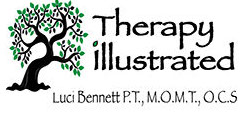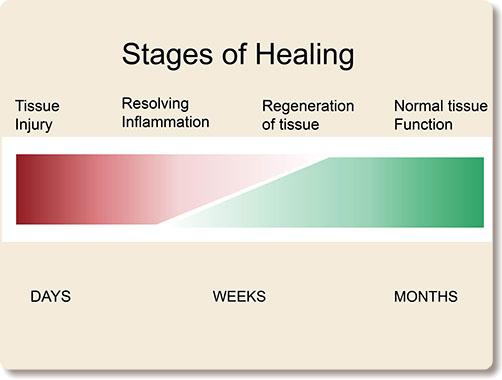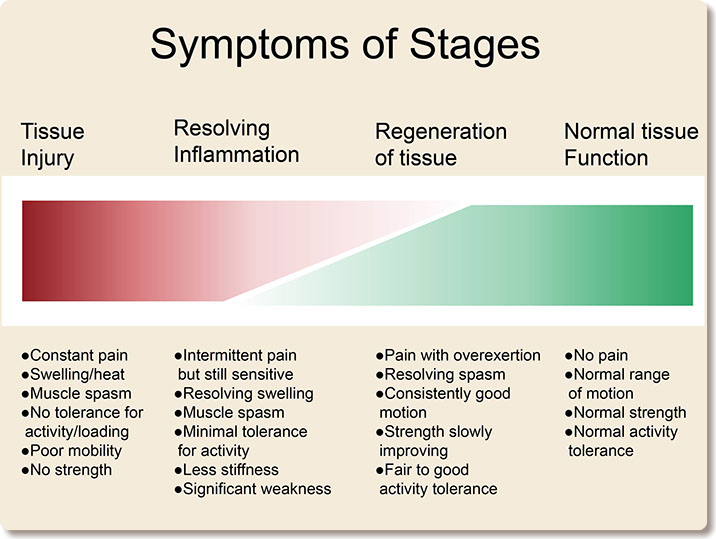


Injury Recovery
The two major causes for tissue injury are trauma such as a fall or car accident as well as cumulative overuse and compensation. Whether the tissue damage is related to an injury or the consequence of other issues, there are stages of healing leading to recovery.
When back pain is the result of an accident, it is pretty obvious what caused the injury of the tissue. Unfortunately, most of the time back pain occurs with a simple activity that happens everyday like bending over to pick up a pencil. Bodies accumulate change everyday, and the spine is equipped with a lot of strategies for compensating for change. When the level of compensation exceeds the capabilities, the tissues give out.
The immediate response to tissue injury is inflammation which is a biochemical process. Inflammation is the body's process for preparing the tissue for repair and collagen regeneration. In an ideal situation, the initial stages of inflammation resolve within a few days moving quickly into the repair process which can take months.

There is usually a certain level of pain involved with tissue injury. The amount and quality are related to what tissues were injured as well as the extent of the injury. There are also associated physical losses with different types of injuries. The pain levels and physical deficits change with each stage of injury recovery.

When a tissue frays, there is an immediate release of cells along with debris and fragments from the damaged area into the blood stream. These microorganisms draw blood and fluid into the area. This stimulates the body’s immune system to send in a team of scavenger cells and clean up. The extra fluid and cellular activity is why the area is hot, swollen, and hurts constantly.
As the cells finish their work, the swelling reduces and the next team of cells begins to arrive. This group’s purpose is making collagen for knitting the tissues back together. It takes a long time for this repair process to complete, and it is extremely important to protect and gently develop the tissue's tolerance for activity.
There are physical losses and a pattern of symptoms associated with each stage of healing. Expecting an immediate resolution of pain is often unrealistic. What typically happens is a slow change and shift in the pattern of pain. A certain activity such as sitting isn't as painful. You might notice that walking though the grocery store didn't hurt as bad or that the pain eased more quickly than before. Paying attention to the pattern of what hurts when is helpful in seeing improvement.
How do I know if I'm
getting better?
The contents of BackPainExplained web site including the text, graphics, images, and other material are for informational purposes only. The content of this web site is not intended to be a substitute for professional medical advice, diagnosis, or treatment. Always seek advice of your physician or other qualified health professional with questions you may have regarding a medical condition. Do not delay seeking medical advice or disregard professional treatment advice because of something that you have read on BackPainExplained.
Call your physician or 911 if you think that you have a medical emergency. Reliance on any information within BackPainExplained web site is solely at your own risk.